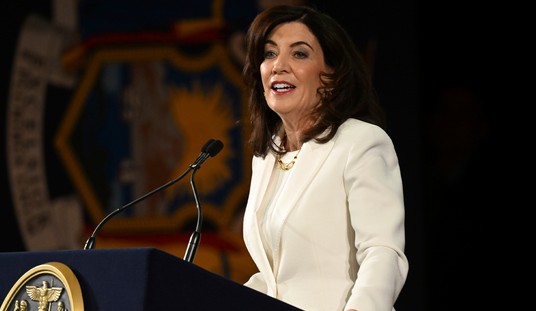In the late 1990s, the Los Angeles Unified School District partnered with United Teachers Los Angeles – funded by a federal grant – to produce a multi-part curriculum entitled, “Workplace Issues and Collective Bargaining in the Classroom.”
Education Action Group obtained it from the California Department of Education.
The purpose of the lessons is to get students to appreciate the need for collective bargaining, and experience first-hand how it works. During the lessons, which can take up to a week of class time, students pose as either “labor” or “management” and bargain a teachers’ contract. They grapple with such issues as health insurance co-pays, raises and hiring procedures. Finally, the union has someone to feel its pain!
The curriculum includes a video which touts the success of the program. It’s insightful that the very first speaker on the video is the president of the teachers union, A.J. Duffy:
“UTLA plays a unique role in the labor movement in L.A. As the second largest teachers’ union in the country, with all of our other responsibilities, we are in the position to educate the next generation of civic leaders by reaching out to high school students and having them participate in a unique UTLA program. … The Collective Bargaining Education Project brings the lessons of labor to the classroom by involving students in the same process UTLA and other unions engage in to gain better wages and working conditions for teachers and students at L.A. Unified Schools.”
The union endorsements of the curriculum don’t stop there.
Recommended
Linda Tubach, one of the curriculum’s creators, says “The students have a very direct experience with the issues that they’re going to face in their workplaces and their experience is a collective one in small groups, mentored by coaches who have direct experience in the collective bargaining process.”
At the time the video was produced, unionized employees in California comprised less than 18% of the workforce, according to the federal Bureau of Labor Statistics. So in other words, Tubach’s lessons don’t apply to over 80% of these future workers. But, of course, that isn’t what the lessons are about. They’re about ginning up awareness and sympathy for organized labor.
Alberto Valdivia, then UTLA treasurer, has nothing but praise for the lessons.
“This is really, really wonderful,” Valdivia says in the video. “And the reason that it’s wonderful is because it’s the students who are making the decisions. … Here you have this whole setup that is made for student enrichment, for student learning, for student knowledge.”
Viewers hear from more union officials and allies who are eager to heap praise upon the curriculum:
“I would think that this is one of the most valuable tools that the L.A. Unified School District has,” notes Miguel Contreras, Executive Secretary-Treasurer of the L.A. County Federation of Labor.
“The vast majority of students will be entering the workforce in the next few years and it’s very important that they understand the role of unions,” says Kent Wong of the UCLA Center for Labor Research and Education. “It’s very important that they understand the benefits of having a union contract and the role of collective bargaining in an environment that provides the only opportunity for workers to collectively negotiate their wages and their benefits.”
It appears that the curriculum is having its desired effect on students.
In the video, one student says, “It makes me – when I get my career or my job – it’s going to want me to get into a union, too, so that I’ll be protected, too.”
Amidst all this pro-union propaganda, parents and taxpayers are left to wonder if any part of LAUSD’s curriculum teaches students about how to start a business or how society and the American economy benefits from the entrepreneurial spirit.
It’s safe to assume that the Los Angeles school district cannot be bothered with pro-capitalist messages which would only distract from the mission of creating the next generation of labor leaders.
In 2000, the school district issued a memo indicating that “In two years, this [UTLA] program has directly served more than 80 teachers and their students in 39 LAUSD high schools. Almost 5,000 students have directly participated in a collective bargaining simulation.”
At long last, school administrators and union leaders are working together. It’s too bad that their joint venture involves indoctrinating students about the value of unionization and collective bargaining.
While it is difficult to nail down just how widespread the curriculum is outside of Los Angeles, the organizers claim they’ve received requests from school districts across the country to bring it to their communities.
“The project’s curriculum is literacy-based, approved by the District, and aligned with the District’s learning standards as well as the California History-Social Science Framework,” the memo states. Says something about California learning standards, doesn’t it?
The fact that schools from across the country want to use this curriculum says a lot about the state of American public education, too.

























Join the conversation as a VIP Member